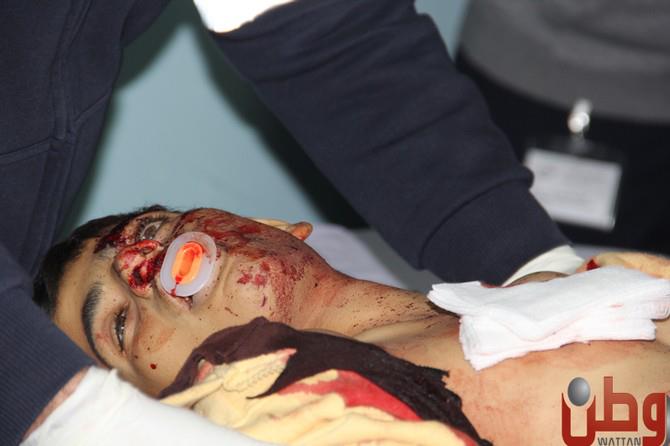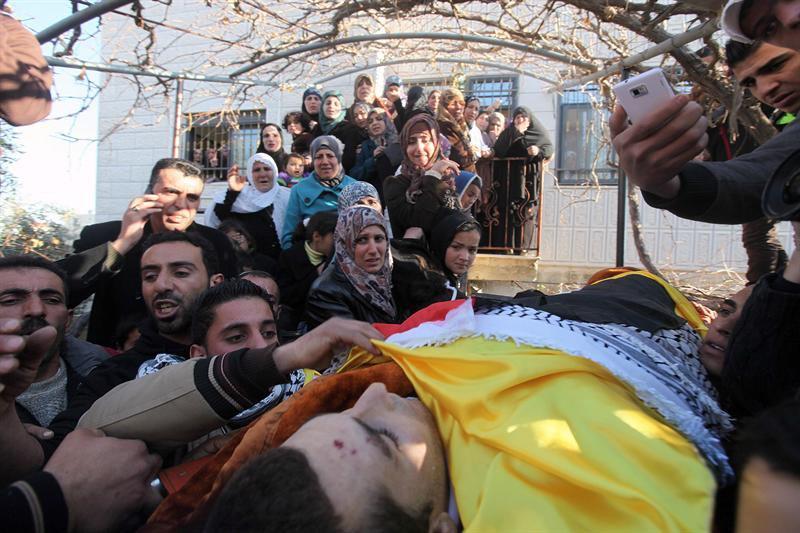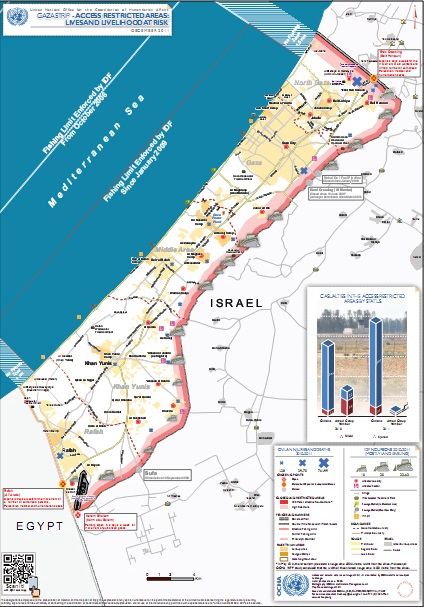samir awwad, 16/17, shot dead in bodros, west bank, 15.1.2013
i’ve been meaning to write about stuff that happened last week but yesterday, the internet was cut all day. this morning, as i tried to sort my thoughts, we heard news of yet another martyr. first unconfirmed, unclear whether he was dead or dying. he did die. his name is samir awwad. he was very young, 16 or 17, he was shot this morning after school in his village bodros in the ramallah area. after exams, students went to the apartheid barrier on their land and there were reportedly minor clashes between the occupying army and the students. samir may or may not have thrown stones at the massive wall or the soldiers who are stationed in full protective military gear behind it. according to eye witnesses, he was walking away from the clashes when he was shot. it doesn’t matter. he’s dead. three bullets from the back, one in the ribcage, one in the leg, one in the neck. another young man, a child still, dead.
i wonder why i took news of the last three martyrs without this feeling in my guts that leaves me wishing i would explode or throw up and get it out, i don’t know why the news of this fourth martyr on a fourth consecutive day in this tiny place – do you understand just how small palestine actually is geographically? the entire surface area of historic palestine ranges 26.670 sq km – compared to belgium with 30.528 sq km and netherlands with 41543 sq km – while the surface area of the west bank, the gaza strip and east jerusalem, were most human rights violations against palestinians occur, comprises only 6.000 sq km) is leaving me choked, feeling this again. why it is the news of his murder that leaves me unable to write about anything else today. i’m not sure why.
odai darawish, 21, shot dead south of hebron, west bank, january 12
in part, my comparable indifference to the first three murders is probably due to me having been caught up with events the last few days. i didn’t have internet access the day odai darawish was shot dead, in fact, i didn’t even hear about his murder until now:non january 12, reportedly 21 years old from the hebron area village of dura, was attempting to cross the apartheid barrier in the south of hebron in order to work inside 48 (in “israel”/the parts of historic palestine that are occupied since 1949). it should have been routine, like he did at other times before. but this time, he was spotted by soldiers from the occupation army. he ran and was shot dead. executed.
running away, odai was not posing an immediate threat to the soldiers or anyone else when he was murdered, making his murder a direct violation of the fourth geneva convention relative to the protection of civilian persons in time of war, to which “israel” is a signatory.
many young men work without permit in 48 because the crap situation here leaves a massive number of them without even hope of regular work. many of my male friends in their early twenties have no jobs. they are supposed to provide for their families, and save some money to build a house for their own future families. but unless they work as teachers, police officers, soldiers, etc. for the pa or bring along the necessary education, language skills and connections to work in an ngo (funded and essentially run by foreigners), they end up without any work. it is very humiliating for many young men to have to ask their mothers or fathers for five shekel for transportation or 15 shekel for cigarettes or 10 shekel for telephone credit. i’ve seen friends struggle with this undignified situation, i’ve looked for work with two friends, gone with them through part of the depressing journey that eventually saw some opt for unprotected work/ without permits in 48. it is this desperation, too, that drives west bank palestinians to work inside the settler colonies, sometimes help build the apartheid wall or colony that will displace their own community.
west bank residents working without permits in 48 are a separate cheap labor force. there are well-known locations where crossing to the other side is easy. these unofficial crossings are part of an industry of its own, with drivers collecting palestinians across the entire west bank and facilitating their crossing for some fee. workers say that israeli police are well aware of these crossings and choose to ignore them, as the israeli economy benefits from the cheap labor that they facilitate. when a palestinian worker is caught in yafa or haifa or elsewhere without permit, he gets punished, detained for some time, returned to the west bank. it is he alone who carries the risk of this working arrangement. but for many palestinian men, particularly for the younger ones, illegal and unprotected work in 48 is their only hope of making a salary and they take the risk. like odai did on january 12.
anwar al mamlouk, 19, shot dead in the “buffer zone” near jabalia, gaza strip, january 13
the next day, i did see a few lines about a young man getting shot lethally and another one getting injured in the gaza strip. i didn’t look further into it – a martyr from gaza once in a while, it takes energy and something else not to get used to it, to still feel rage about every single martyr, to still want to put a face to every single such headline. 19 year old anwar al mamlouk was shot in the unilaterally established and militarized “buffer zone” in the jabalia area, an arbitrary strip of land in the gaza strip that lies on the gazan side of cease fire line of 1949, along gaza’s coast as well as its border with Egypt. according to eye witnesses, anwar and a group of people were close to the apartheid fence and zionist soldiers were firing tear gas canisters and other projectiles/ammunition at them. anwar was shot in the stomach. 21 year old omar wadi was visiting the graves of his friends when he saw anwar getting shot. instinctively, he joined a few others who ran towards anwar when the soldiers resumed shooting. omar was injured in both lower legs by shrapnel from a bullet. both anwar and omar where carried away by two other young men who went uninjured. anwar died on the way to the hospital.
they call it a “buffer zone” to mask ethnic cleansing
anwar is one of too many. the so-called “buffer zone” is a no-go or high-risk zone that is of arbitrary and changing width, ranging from 300m to reportedly up to 1,5km (in the north), with no fixed demarcation. palestinians learn that they have entered or come too close to the invisible and fluid line that indicates the beginning of the zone when occupation soldiers shoot life ammunition at them – often via remote-control from inside of military towers and without prior warning. from the beginning of 2006 to the end of 2011, 173 palestinians were murdered by israeli soldiers in this “buffer zone”.
the zone is further enforced unilaterally through regular ground incursions during which lands are razed and structures are demolished. according to one human rights group, between 2005 and the summer of 2011, “305 water wells, 197 chicken farms, 6 377 sheep farms, 996 complete houses, 371 partial houses, three mosques, three schools, and six factories have been destroyed within the ‘buffer zone’. In addition, a total of 24.4 sq. kilometres of cultivated land has been leveled”.
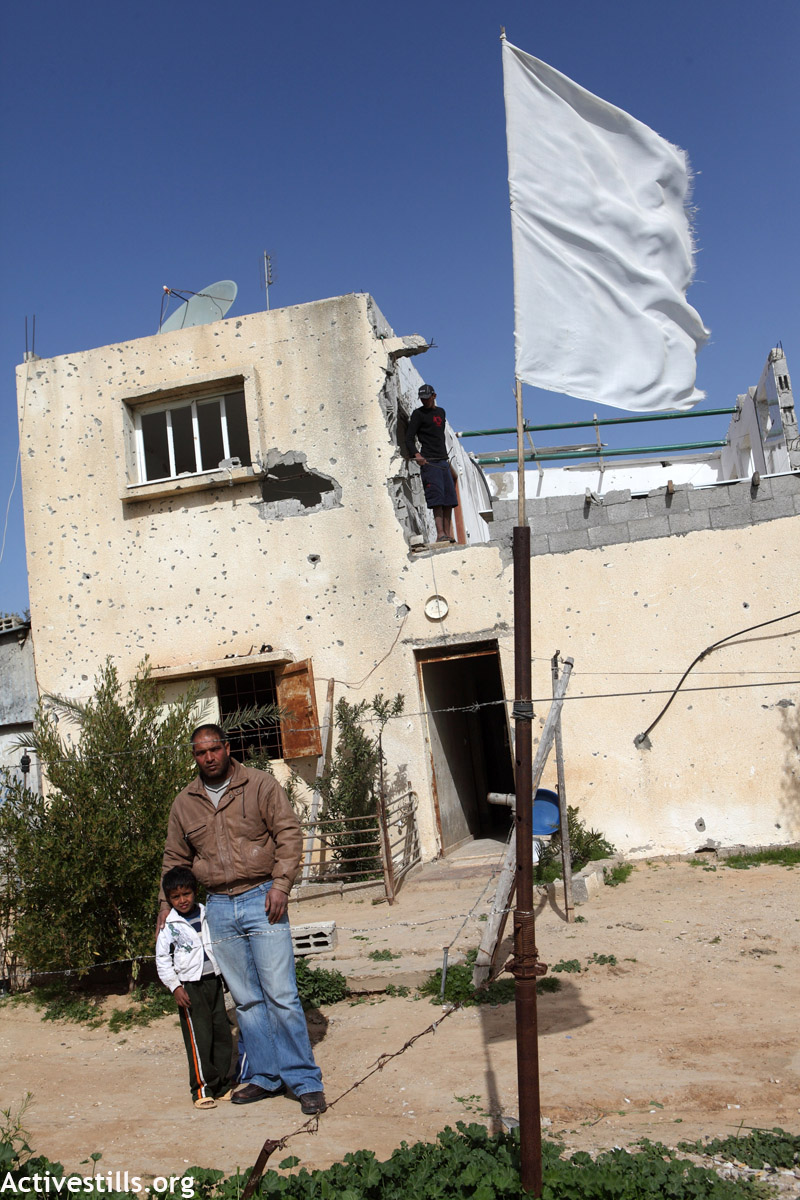
nasser abu sa’eed and his sons at their house in juhor al deek which they finally left after it was shelled yet again in 2011
i am not sure how many people were effectively displaced by the policies enforcing the “buffer zone” – reportedly, around 12% of the total population of gaza are directly effected by these policies of denial of access to land and maritime space – but palestinians who own property in or near this no-go/high-risk zone cannot simply give up on their lands. it is estimated that the entire zone constitutes about 17% of the land mass of the gaza strip, 85% of the maritime area and 30-40% of its agricultural lands to which palestinians in gaza should have access to according to the oslo accords. accessing these high-risk areas is crucial for a significant portion of palestinians. given the shortage of construction material, grazing grounds, and agricultural produce in the strip, they will continue to regularly risk their lives in order to grow crops in the zone, let their animals graze or – in a reality of over 13000 residential houses partially or entirely destroyed in the past decade and with most construction materials not being allowed into the gaza strip via israeli controlled crossings – to collect rubble for the (re)construction of buildings.
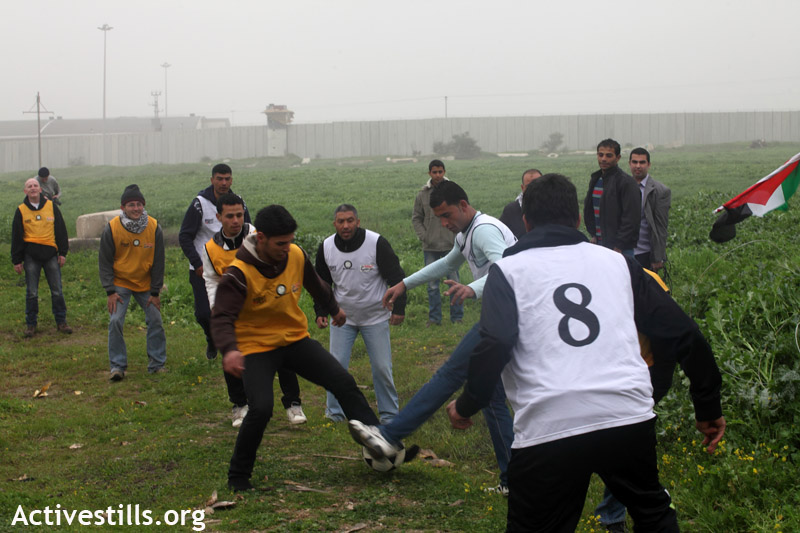
demonstration against denial of access in the “buffer zone” in front of “erez”, beit hanoun, 7.2.2012
others regularly approach/enter the zone in groups to protest what is effectively a policy of additional land theft. it sounds like anwar was one of them, one of too many who were murdered, omar one of too many who were injured.
mustafa abu jarad, 20/21, shot dead near beit lahiya, “buffer zone”, gaza strip, january 14
another one was mustafa abu jarad, 20 or 21 years old. he was shot in the head while trying to farm. he was among a group of people who were working on a plot of land north of beit lahiya. they were shot at from a military tower and ran away for safety. they were just returning to resume their work when a sniper shot mustafa in the head. he died later that day.
when i read the news of mustafa’s murder, there was a brief moment were i did feel anger, where i did react. to my knowledge, he was at least the second young man, someone so much younger than me, getting murdered on consecutive days. but that moment, too, past without me looking up more about mustafa.
maybe samir’s murder hits me so much more because he was the second martyr in two consecutive days that i had heard of and maybe, heartlessly, numbers do matter in my reactions as well. or i am feeling this shitty now while i more or less ignored the news of the previous three martyrs these past days because it wasn’t through reading that i heard about his murder – someone around me received a call about his death, then the usual “is it true?” “is he really dead”, “is he only injured”, “who is he”, “where is he from” “how old is he” “what was happened” scramble. maybe it’s the fact that samir was murdered here, very close to me actually, while protesting against the apartheid wall. that hits a lot close to home, from experience, i can kind of imagine the situation there today, and it is this recognition that now makes me imagine what his family, his mother, his friends are doing now, are going through now, getting him to ramallah hospital, anger, organizing the funeral, letting relatives know, etc. this is familiar.
i’m sitting here waiting with friends for something while more details about samir’s murder are getting in, i’m thinking of his family, i’m thinking of rushdi’s family and crying. my friend amani, a niece of rushdi’s, just told me it’s her birthday today. she’s in her late teens, and tends to get angry easily, so i asked her if she was planning on doing something, maybe have cake, a little celebration. she said why would she celebrate when people are dying. the news of samir’s murder was the first thing she heard when she woke up.
i can’t imagine how their families will manage to continue. i wish them strength and healing and things i cannot put in words. may odai, anwar, mustafa and samir rest in peace….

